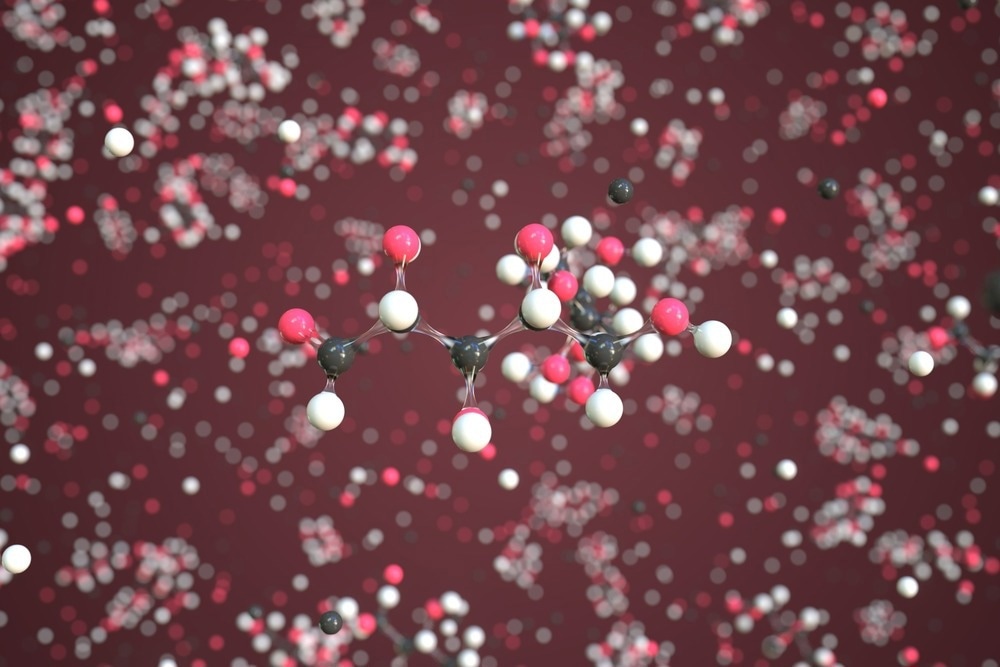In a recent study published in Nature Metabolism, researchers attempted to identify new genes and molecular pathways that might supply energy when the availability of glucose or other nutrients is limited.
 Study: Salvage of ribose from uridine or RNA supports glycolysis in nutrient-limited conditions. Image Credit: Irina Anosova/Shutterstock.com
Study: Salvage of ribose from uridine or RNA supports glycolysis in nutrient-limited conditions. Image Credit: Irina Anosova/Shutterstock.com
Background
In the absence of glucose or its limited availability, alternative nutrients must be harnessed by all living cells to tolerate a complete loss of glucose, the source of all energy and carbon needed for growth. Previous studies have demonstrated that the ribose moiety of uridine, building blocks of ribonucleic acid (RNA) nucleotides, could help harness energy via three pathways, as follows:
i) uridine phosphorylase 1 (UPP1)/UPP2-catalyzed phosphorolytic cleavage of uridine into uracil and ribose-1-phosphate (R1P);
ii) conversion of R1P into glyceraldehyde-3-P and fructose-6-P via pentose phosphate pathway (PPP);
iii) glycolytic utilization to fuel adenosine triphosphate (ATP) production, biosynthesis, and gluconeogenesis.
RNA is an unstable molecule, i.e., highly sensitive to RNases. However, RNA-derived uridine plays a role in glycosylation in the absence of glucose, and uridine phosphorylase helps in maintaining ATP levels during glucose restriction in the brain.
About the study
In the present study, researchers performed a nutrient-sensitized genome-wide Clustered Regularly Interspaced Short Palindromic Repeats-CRISPR associated protein 9 (CRISPR-Cas9) depletion screen using UPP1-expressing K562 cells grown in glucose-free medium or uridine/pyruvate-containing Dulbecco’s modified Eagle’s medium (DMEM), both poor substrates for glycolysis, and a PRISM growth assay across 482 cancer cell lines, of which 22 are solid tumor lineages.
They confirmed the capacity of these cells to perform glycolysis from uridine-derived ribose in cancer cell lineages, primary macrophages, and a mouse model, i.e., in vivo. They also investigated the mechanism that uridine employs to facilitate the growth of UPP1-expressing cells. Additionally, they transduced K562 cells with an ORFeome v8.1 library comprising 17,255 barcoded open reading frames (ORFs) and sequenced barcodes after harvesting those cells 21 days later using next-generation sequencing.
The team also designed a tracer experiment to test if uridine-derived ribose could work as a glycolysis substrate. To this end, they used isotopically labeled uridine with five ribose carbons (13C5-uridine) and performed liquid chromatography–mass spectrometry (LC–MS).
Results
Experiments with UPP1-expressing K562 cells showed that elevated uridine phosphorylase activity in a sugar-free medium supplemented with RNA facilitated cell growth in the complete absence of glucose. Conversely, the expression of UPP1/UPP2, or the addition of uridine, had no effect in a glucose-containing medium.
In agreement with the ORF screen, UPP1 was the top-scoring transcript genome-wide in the PRISM collection, i.e., well characterized at a molecular level. Thus, many cell lines from this collection grew remarkably well in uridine, e.g., melanoma and glioma lineages. Overall, these experiments confirmed that endogenous UPP1 expression was necessary for the growth of cancer cells on uridine.
Many previous studies have evidenced that living cells with mitochondrial deficiencies (necessary for oxidative phosphorylation) depend on uridine for pyrimidine synthesis, an activity coupled to the electron transport chain. Yet, it is underappreciated that uridine supplementation favors cell growth during glucose depletion.
In this study, the authors showed that uridine also served as a substrate for energy (or ATP production) and gluconeogenesis apart from RNA biosynthesis in the absence of glucose. At the molecular level, UPP1/UPP2 phosphorolytically cleaved uridine-derived ribose moiety and shuttled it through the non-oxPPP and glycolytic processes, thus, facilitating nucleotide metabolism and gluconeogenesis.
Accordingly, the authors observed a significant amount of labeling in glycolytic intermediates and secreted lactate when cells were supplemented with uridine while proliferating in a sugar-free medium. They also detected labeling patterns from uridine-derived ribose in the liver and the whole organism in vivo.
Wice et al., Loffler et al., and Linker et al., all compared uridine to other nucleosides using similar tracer experiments. They observed the assimilation of uridine-derived carbons in most mammalian cell cultures and chicken embryos. However, since they did not detect lactate and pyruvate, they proposed that cells derived energy entirely from glutamine when glucose was depleted.
Other studies reported that uridine protected cortical neurons and stimulated astrocytes from glucose deprivation-triggered cell death, similar to ATP, thus, hypothesizing that uridine could also be an ATP source. The current study results were consistent with this hypothesis.
Conclusions
To conclude, the authors observed that the capacity to harness energy and carbon building blocks from uridine was widespread. In addition, the authors noted that UPP1 was the most robust quantitative trait gene loci for uridine in circulation, and the key determinant of uridine in circulation was uridine phosphorylase activity.
Accordingly, glioma and melanoma cancer cell lines, human- and mouse-origin primary macrophages, and even tissues expressing UPP1/UPP2 in vivo, all displayed an exceptional capacity for uridine-derived ribose catabolism or glycolysis. Based on gene expression studies, uridine might be the alternative energy source in blood cells, brain, lungs, kidneys, and certain cancers. It is also highly likely because uridine is a soluble nucleoside that is abundant in circulation.